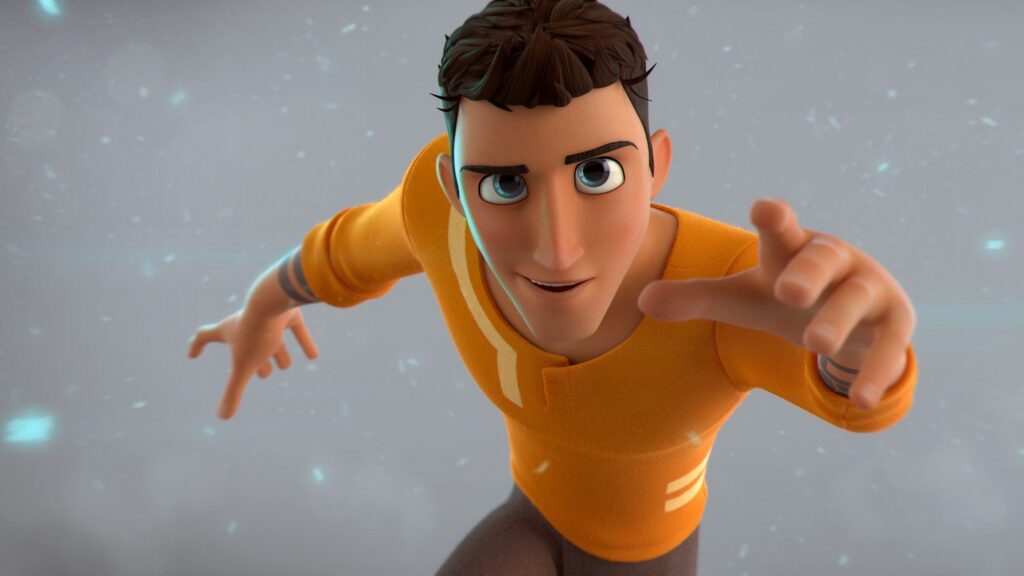The significance of composition and framing in the field of 3D animation cannot be emphasized, as each pixel is painstakingly created and each frame is carefully put together. There is no denying the fact that composition and framing are essential for drawing the viewer’s attention. It also helps in evoking emotion, and at the same time improving the storytelling experience, much like they are in traditional filmmaking and photography.
In this blog post, we are going to discuss the importance of composition and frame in 3D animation for animation studios in New York and look at how they affect viewer engagement, character interaction, and visual narrative. We are also going to discuss some case studies. So without any further ado let’s get started!
Guiding the Viewer’s Eye:
One of the primary functions of composition and framing in 3D animation is to guide the viewer’s eye and direct their attention to key elements within the frame. Through the strategic use of camera angles, framing techniques, and visual hierarchy, animators can lead the viewer’s gaze, ensuring that important story beats, character actions, and environmental details are clearly communicat. Whether it’s a close-up shot to highlight a character’s expression or a wide-angle shot to establish the scale of a vast landscape, composition and framing serve as powerful tools for controlling the viewer’s perception and guide their emotional response.
Conveying Emotion and Mood:
Composition and framing also play a crucial role in conveying emotion and mood in 3D animation. By carefully arranging elements within the frame, animators can evoke a wide range of emotions in the audience, from joy and excitement to fear and suspense. For example, low camera angles and Dutch tilts can create a sense of unease or instability, while high angles and symmetrical compositions can convey a feeling of grandeur or awe. Through the use of color, lighting, and camera movement, animators can further enhance the mood of a scene, immersing the audience in the world of the animation and eliciting an emotional response.
Enhancing Storytelling Dynamics:
In addition to conveying emotion, composition and framing also play a vital role in enhancing storytelling dynamics in 3D animation. The placement of characters within the frame, the arrangement of props and set pieces, and the use of visual motifs all contribute to the narrative structure and thematic resonance of the animation. For example, the juxtaposition of characters against a cluttered background may symbolize their internal turmoil or external conflict, while the use of leading lines and framing devices can draw parallels between different story elements and foreshadow future events. By leveraging composition and framing techniques, animators can enrich the narrative depth and visual complexity of their animations, elevating them from mere spectacle to immersive storytelling experiences.
Audience Engagement and Immersion:
Ultimately, the goal of composition and framing in 3D animation is to engage the audience and immerse them in the world of the animation. By creating visually compelling compositions that draw the viewer in and hold their attention, animators can foster a deeper connection between the audience and the characters, setting, and story. Whether it’s through dynamic camera movements that simulate the sensation of flight or carefully crafted compositions that evoke a sense of nostalgia or wonder, composition and framing serve as powerful tools for captivating audiences and transporting them to new and exciting worlds.
Case Studies:
Case studies and practical examples serve as invaluable tools for understanding the real-world application of composition and framing in 3D animation. By analyzing specific scenes and sequences from popular animated films, television shows, and video games. We can gain insights into the techniques and principles employed by animators to create compelling visual storytelling experiences.
For instance, we can examine how Pixar’s “Toy Story” series utilizes composition and framing to convey the scale and scope of its fantastical world while grounding the narrative in relatable human emotions. Scenes such as Buzz Lightyear’s dramatic fall with Woody in the first film or the thrilling escape from Sunnyside Daycare in “Toy Story 3” showcase the use of dynamic camera angles, strategic placement of characters. Visual motifs to enhance the emotional impact of the story.
Similarly, in the world of video games, titles like “The Legend of Zelda: Breath of the Wild” demonstrate how composition and framing can contribute to player immersion and exploration. The game’s vast open world is brought to life through carefully crafted composition. Draw players into the landscape, with sweeping vistas and iconic landmarks serving as focal points for navigation and discovery.
By studying these case studies and practical examples, animators can glean valuable insights into the techniques and strategies used to create memorable and impactful compositions in 3D animation. Whether it’s conveying emotion, guiding the viewer’s eye. Enhancing the narrative dynamics, composition and framing play a crucial role in shaping the visual language of animation and enriching the storytelling experience for audiences worldwide.
Conclusion:
As it may be clear from this blog post, the significance of composition and framing in 3D animation is massive. Animation’s visual language is greatly influenc by composition and framing. Animators who grasp these basic ideas and methods can take their animations to a whole new level.



